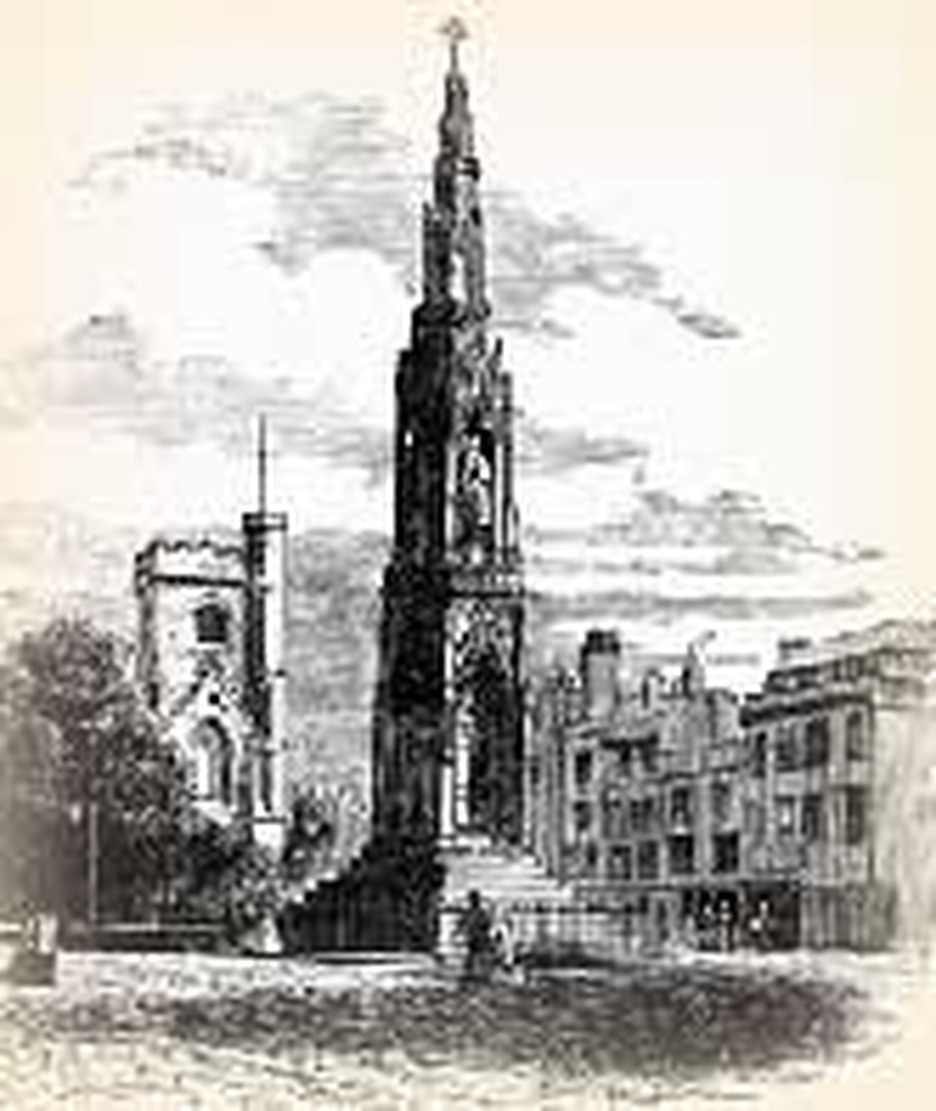
Something had to be done. Meeting on this day, November 15, 1838 a group from the university of Oxford and the city met at Town Hall and agreed upon that. They decided to ask the public for funds to erect a memorial. Their action was more of a protest than anything else. Historian James Anthony Froude had downplayed three of England's prominent Protestant martyrs in a book he wrote. At the time, he was under the influence of the Tractarians, a group of Reformers whose eyes turned toward Rome. (John Henry Newman, one of the editors of Froude's Remains, did become a Roman Catholic.) The Oxford leaders wanted to reassert the dignity of the three slighted men.
And so they appealed for funds to erect a Gothic Cross atop a spire in Oxford, England, to the memory of Nicholas Ridley, Hugh Latimer and Thomas Cranmer. The committee selected a design by George Gilbert Scott. Work was completed in 1841.
The inscription on the cross reads: "To the glory of God and in grateful commemoration of His servants, Thomas Cranmer, Nicholas Ridley, Hugh Latimer, Prelates of the Church of England, who, near this spot, yielded their bodies to be burned, bearing witness to the sacred truths which they had affirmed and maintained against the errors of the Church of Rome; and rejoicing that to them it was given not only to believe in Christ, but also to suffer for His sake . . ."
Almost three hundred years earlier, these three Church of England leaders ahd been publicly burned to death in this distinguished university center. All three were executed across from the main entrance of Balliol College on Broad Street (formerly Horsemonger Street.)
Bishops Ridley and Latimer were both executed on October 17th, 1555. The night before, while eating his last supper, Bishop Ridley remarked to his keeper's wife: "Though my breakfast will be somewhat sharp, my supper (in heaven) will be more pleasant and sweet." Ridley embraced Bishop Latimer at the place of execution, and when the first fagot was lit at Ridley's feet, Latimer encouraged him: "Be of good cheer, Ridley; and play the man. We shall this day, by God's grace, light up such a candle in England, as I trust, will never be put out."
The year following, March 21, 1556, Archbishop Cranmer was put to death. At one point he had signed a document renouncing his Protestant faith. Shortly before his execution, he repudiated his own weakness by saying "forasmuch as my hand hath offended, writing contrary to my heart, therefore my hand shall first be punished; for when I come to the fire it shall first be burned." And Archbishop Cranmer did hold his hand in the fire until it was burnt to a cinder, frequently saying: "This unworthy right hand."
Bibliography:
- Adapted from an earlier Christian History Institute story.
- Black, Sid. "A Brief History of the Martyr's Memorial Loyal Orange Lodge No.213 Oxford." http://www.geocities.com/Athens/ Ithaca/4657/sidsbook.htm
- Liddon, Henry Parry. Life of Edward Bouverie Pusey. Chapter XXI. London: Longmans, 1894.
- "Sir George Gilbert Scott." http://homepage.ntlworld.com/ john-nicholson/hafodunos/ggscott.htm
- Stuart, Clara H. Latimer. Grand Rapids, Michigan: Zondervan Books, 1986.
- Various other internet articles.








